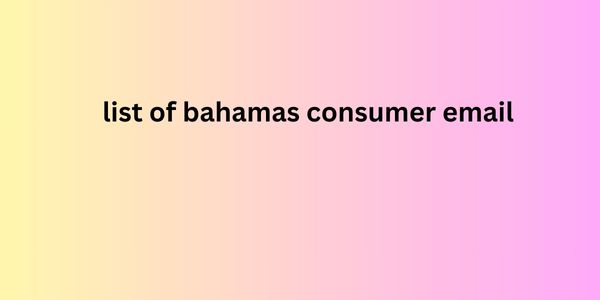This model focuses on finding your list of bahamas consumer email audience and knowing how they behave differently depending on the level of connection they have with you or your company .
Following the La Curva methodology, the following will be proposed:
How to boost your business.
Customer life cycle.
BOOST YOUR BUSINESS WITH “THE CURVE”
The basis of this strategy lies in knowing your audience . What do they want? What are they willing to pay more for? Obviously, not all of your audience will want the same thing. In fact, many of them won't even be interested in buying from you, at least not yet.

That is why when planning our portfolio of products and/or services we must take into account the different groups that make up our audience:
SUPERFANS: They are big fans of your work and are willing to spend a lot more for what you offer (average ticket price much higher than the average customer). A clear example would be Apple fans who are the first to request new products or services as soon as they are announced on the market, even if it is months in advance.
FANS: These are also loyal followers, but you will have to prepare products or services that meet expectations if you don't want their interest to wane and they end up going to the competition or spending less.
CUSTOMERS: are those who buy your products but have not yet generated that connection with the brand or that need with what you offer.
NON-CUSTOMERS: They have heard about you or your brand but have not made any purchases, either because they do not trust you or because they do not believe they need what you offer.
the-long-tail-sales-curve
Previously, this categorization was much more complicated to achieve, but today, with the measurements carried out on your social networks, website, e-commerce, email marketing campaigns, etc., it becomes an affordable task.
Some examples of data to analyse in order to differentiate using these tools would be the number of interactions per user or the average sales receipt. If someone interacts and spends a lot, we are dealing with a fan of the brand.
How can we link this model to the customer lifecycle? Read on for a practical example of how you could present this approach to your audience.
LIFE CYCLE OF YOUR AUDIENCE
If we already know the needs of our potential client, we only need to propose services and/or products that satisfy their needs, but we will have to help them go through the entire customer life cycle that we have designed.
It rarely happens that someone in your audience becomes a “fan” overnight , the logical process consists of several steps as indicated in the following practical example from a construction company :
Hook element: allows you to make yourself known by offering something that adds value to your audience for free or at a low cost. The CAC (Customer Acquisition Cost) here is very high for the profit obtained, if any profit is obtained at all, but do not worry since the key is that for subsequent sales the CAC is drastically reduced. In the case presented, it could be an ebook , newsletter or webinars on topics related to construction.
Trust test: Once your audience starts connecting with you and your company, they will start trusting you with larger jobs with a much lower CAC than if you had tried to sell this product right away. Following the example, they could hire you for consulting services on a new project or renovation.
Technical validation: if you have already generated the necessary trust, they will begin to entrust you with more comprehensive projects that include both the advisory and design work as well as the execution of this for small works or renovations.
Trust and full support: here they already know the validity of your company and are willing to provide you with the design and execution of any type of work.
Customer-life-cycle-ladder
OUR CONCLUSIONS
First, we must understand The Curve and see how we can segment our audience into the necessary levels (THEY DO NOT HAVE TO BE 4!), thus building our client's life cycle and the strategy for them to advance with us.
Some of the keys would be:
Analyze your audience – are there superfans in the industry? What are they looking for?
DON'T make the mistake of only offering your services to a loose segment of your audience . It is a process in which the client has a start and as trust is gained with them, progress is made towards sales that give us the most income and with a very low CAC compared to the conventional sales approach.
Of course, there will be times when clients will come in who will skip stages and require your business services at any level of the process from the beginning. In those cases, it is better for you , you have managed to reach the stages that bring you the most benefit without having to “invest” in them in the previous stages. After that, continue helping them move forward in their life cycle .
This model is used in both B2C and B2B, although in the latter the concept of a fan differs slightly from the definition of the term itself. In B2B, a “fan” would be a client who has generated so much trust in you that they have you as their first choice over other suppliers , even paying more for you to do the work. We won’t go into this topic now, but the key here is to be radically different in order to stand out from the competition .
